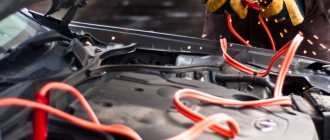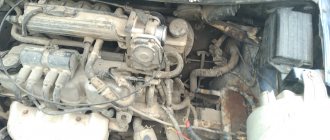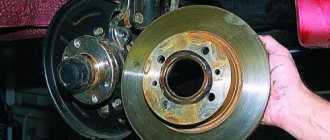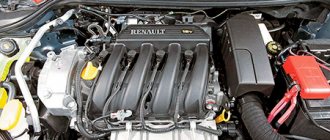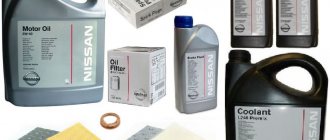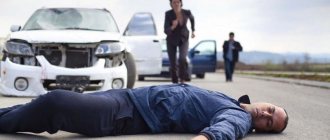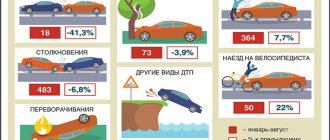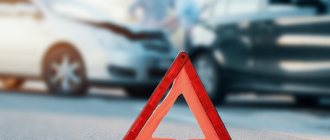First medical aid in case of an accident in 2020 - provision to victims, rules, instructions, first aid,
For example, an employee must clearly know in which case chest compressions should not be performed. If there is a pulse, even a weak one, by performing a closed massage you can knock down the heart rhythm, forcibly interfering with the work of the heart. The heart is essentially a pump that pumps blood through the valves. Rhythm disturbance can lead to the death of the body.
The best scenario for the development of events in an accident is the absence of casualties or injuries.
In serious accidents, for example on country roads, drivers and their passengers suffer significant injuries.
Those citizens who witnessed a car accident, or simply those who escaped without injury, can provide first aid even before doctors arrive.
Car first aid kit
A car first aid kit includes the following essential items:
- bandages;
- medical gloves;
- hemostatic tourniquet;
- plasters;
- device for artificial respiration;
- dressing package;
- scissors.
It is recommended to add to the list of required components:
- disposable neck collar;
- splint for fixing the fracture.
It is recommended to add medications if you are confident in their correct use.
Additional Information
A pedestrian can be hit by a speeding car and suffer several different injuries when they collide with a car. Claims and complaints? The hood of the car hits him on the thigh, then the man flips over, falls on the asphalt and is hit in the head and neck. Naturally, this is one of the options for receiving combined injuries. After such an accident, the algorithm for the actions of others should be as follows:
What to do for different types of injuries?
First of all, as stated above, you need to call an ambulance to the scene of the accident. Next, focus on the type of injury received and the person’s condition.
Unconscious state
First, you need to again remove all obstacles that block the flow of oxygen. It is best to turn the victim’s head to the side, open his mouth and take out his tongue, because the tongue can cause the victim to simply suffocate. Place your legs above head level.
Don't forget to check for breathing and pulse.
Bleeding
If arterial bleeding occurs, a tourniquet is applied five centimeters above the injured area. It is important to take into account the time of year, because in winter the tourniquet can be held for no more than sixty minutes, and in summer - no more than one hundred and twenty minutes.
If venous bleeding occurs, the bandage is applied directly to the damaged area, before which a sterile napkin must be placed on it. If capillary bleeding occurs, a sterile napkin is applied to the damaged area.
Fracture
If the spine and pelvis are not damaged, then a splint is applied to fix the fracture. In case of injury to the pelvis and spine, it is better to simply wait for a medical team. The tire is located either above or below the damaged area.
If the ribs are broken, you need to bandage the affected area while inhaling. It is also not recommended to transport a person in a horizontal position.
Failure to provide assistance
The driver may incur liability, which is provided for by law, if he does not provide assistance. But only if he was responsible for the passenger. Also, punishment will follow if the culprit of the accident deliberately evades the first medical actions.
The driver has no right to leave the place where the accident occurred. He must stop the car and indicate with emergency signs. Further, his responsibilities include calling a medical team or delivering the victim to the nearest hospital, but not in his own car. Sometimes you can deviate from established norms.
Important: the driver can leave the scene of the accident if he can deliver the injured people to a hospital. But then he must return there.
First aid
The rules of first aid are simple and necessary knowledge for everyone that will help provide immediate assistance to victims.
A selection for you!
Download forms and sample documents for motorists to a safe place.
First aid in case of an accident
Road accidents claim the lives of hundreds of thousands of people every year. According to statistics, only 20% of them die from injuries incompatible with life. The rest of the people die due to the inaction of others or due to incorrect medical procedures. First aid in case of an accident should be provided by drivers passing by or passers-by. In an accident on the highway, the victim may be not only in the car, but also lying on the road, so the algorithm for providing assistance varies.
First aid for a pedestrian
A pedestrian can be hit by a speeding car and suffer several different injuries when they collide with a car. The hood of the car hits him on the thigh, then the man flips over, falls on the asphalt and is hit in the head and neck. Naturally, this is one of the options for receiving combined injuries. After such an accident, the algorithm for the actions of others should be as follows:
Actions in case of an accident should not cause harm to the injured person, therefore it is not recommended to touch him without special reasons. Without special devices and rigid clamps, broken vertebrae can be displaced more, thereby contributing to the emergence of complications and increased traumatic shock. Crimes against life and health? The victim must be covered, especially in the cold season.
First aid for a victim in a car
First medical aid in case of an accident should be provided in order of priority. Doctors identify several groups of victims; depending on their injuries, assistance should be provided in the following order:
- Victims with respiratory and cardiac arrest;
- Victims with severe bleeding;
- Victims with skull damage;
- Victims with spinal injuries.
Next, assistance should be provided to people with minor injuries. By following this order, you can save many more lives and not get lost on the spot.
Necessary actions at the scene of the accident:
All other minor injuries are covered with dry bandages, and fractures are immobilized. It is important to maintain a conversation with the victim, avoiding clouding of consciousness.
Step by step instructions
If people are conscious and their movements are not limited, you need to help them get out of the vehicle.
Note!
It is prohibited to remove the victim from the car before the arrival of professionals if there is a suspicion of spinal injury!
If people are unconscious, they must be removed from the car very carefully. It is advisable that 2-3 people provide assistance. One witness should take the victim under the armpits, and the second by the legs.
Note!
When removing an unconscious person from a vehicle, it is prohibited to bend his upper and lower limbs. The torso should be in as straight a position as possible.
The following actions to assist victims are provided in this order:
- The injured person is carried (taken) to a safe place.
- If consciousness is present, a survey is carried out and the general condition, the presence of injuries and damage are assessed.
- An unconscious victim is urgently checked for the functioning of vital systems: pulse, breathing and heartbeat. If they are absent, resuscitation measures are carried out until professionals arrive.
- After resuscitation, the person is carefully examined and all visible injuries are determined.
- If possible, provide the victim with painkillers.
- For fractures, limbs are immobilized.
- Apply a tourniquet or tight bandage for severe arterial bleeding.
- Perform actions to prevent the spread of infection in the body by applying antiseptic bandages and dressings.
- They provide the person with the most comfortable and correct position, based on the severity and location of the injury.
- After the arrival of medical professionals, they are informed of all the actions taken.
The main goal when providing first aid in an accident is to eliminate factors that pose a threat to human life.
These include the following deadly signs:
- Severe external bleeding;
- Unconscious state;
- Lack of functioning of the heart and respiratory organs;
- Traumatic shock.
Note!
If a person is not breathing and there is no audible heartbeat, eyewitnesses have no more than four minutes to save the patient’s brain from dying, which will occur due to a catastrophic lack of his oxygen supply.
Let's consider how to properly provide assistance to victims of road accidents in each specific case.
Resuscitation actions
Before deciding to provide resuscitation, you need to make sure that the victim has no signs of life. Urgent resuscitation care will be required if a person lacks one of the following factors:
- Consciousness;
- Clear and regular breathing;
- Pulse on the carotid artery;
- Pupil reactions to light.
Read also: What to do if you have food poisoning?
Symptoms and treatment at home To check the reaction of the pupils, you need to carefully push back the person’s eyelid and place your palm on it. If, after the palm is removed, the pupils do not constrict, this indicates a critical condition of the person.
Note!
Lack of pupil reaction to light is not evidence of death! Only the absence of breathing and heartbeat can indicate a fatal outcome.
However, the provision of first aid should be carried out as long as there is at least the slightest hope of saving the person.
The resuscitation process includes two successive stages:
- Clearing the respiratory tract;
- Carrying out artificial respiration in combination with indirect cardiac massage.
Performing the first step is extremely important, since clearing the upper respiratory tract will allow the person to start breathing on their own. This action will help to perform artificial respiration efficiently.
First aid for clearing the respiratory tract is performed in the following order:
- The victim is placed on his back;
- His head is thrown back;
- The patient's lower jaw is pushed forward;
- Using a finger with a bandage or gauze wrapped around it, clean the oral cavity in a circular motion.
Carrying out artificial respiration is necessary to restore lung function by supplying oxygen to them. This technique is performed until the patient begins to breathe on his own or medical workers arrive.
Heart massage, performed using the indirect impact technique, allows you to provide organs and tissues with the required amount of blood supply. Rescue actions are carried out until a clear pulsation appears or professionals arrive.
After the victim clearly begins to show signs of life (weak breathing and pulsation in the carotid artery appear), a restorative measure is carried out, which consists of ensuring the person is positioned on his side.
Note!
The victim must be turned over correctly. To do this, his hand is placed on his shoulder. Then they bend the patient’s leg and, taking it by the knee, slowly turn the whole body onto its side.
If the patient is breathing and a pulse is palpable, but he is unconscious, assistance is provided in the following order:
- Clears the airways;
- They give the person a “recovery” pose;
- Regularly record pulse and respiration;
If necessary, resuscitation begins immediately.
Stopping blood loss
Significant and rapid blood loss is often the main provocateur of the victim’s death. Therefore, such conditions require emergency care.
Depending on the type of blood loss, its stopping will depend.
So, at the sight of bright scarlet blood gushing out of a wound like a fountain, one can without a doubt state that the artery has been damaged. This type of blood loss is the most dangerous. To stop it, you will need to apply a tourniquet 5 cm above the damage itself.
With venous bleeding, the blood is dark, viscous, and pours out in a large stream. To save the patient in this case, a pressure-type bandage (not a tourniquet!) is applied 1-2 cm below the wound, after covering it with a napkin.
When stopping blood loss, it is important to remember that the tourniquet is used for 1-2 hours, depending on the time of year. If the arteries or veins are compressed for a longer period of time, the victim will develop tissue necrosis, which will lead to gangrene. Therefore, after using these devices, it is mandatory to write a note indicating the start time of the tourniquet.
Note!
If after a road accident you do not have a pen and paper to make the necessary notes, the time is indicated on the patient’s body or face by all available means: lipstick, the victim’s blood, etc.
If the blood loss is insignificant and accompanies minor abrasions or cuts, then it does not threaten the health and life of the patient. However, the skin is damaged, and there is a high risk of infection in the wound. To prevent these unpleasant consequences of capillary damage, a bandage soaked in an antiseptic is applied to the wound.
Damage to bone tissue
Damage to bone tissue in the form of dislocations or fractures is a common occurrence in accidents.
First aid in this case comes down to identifying the injury and immobilizing the injured limbs.
Read also Mushroom poisoning! First aid, symptoms, prevention
Fractures can be open or closed.
With open fractures, the following symptoms are observed:
- Severe pain that gets worse when trying to move;
- Swelling and deformation changes in the injured limb.
An open fracture differs from a closed fracture by the obligatory presence of a wound, from which bone fragments may be visible.
Help in this case is provided in the following order:
- Provide analgesics;
- Treat the skin around the wound with an antiseptic solution;
- Immobilize the limb using splints
Remember that first aid in case of an accident is the responsibility of any citizen who witnesses it. In case of hiding from the scene of a disaster or ignoring the incident, the legislation of the Russian Federation provides for punishment in the form of a fine or correctional labor.
Procedure for providing assistance in case of an accident
1. The first thing to do is to ensure the safety of victims and rescuers.
Be sure to install a warning triangle and warning lights. The sign is placed at a distance of at least 15 meters in populated areas and 30 meters outside.
Often, victims in shock fly under the wheels of passing cars, hoping that they will stop. And there are cases when the rescuers themselves are hit by a car at night.
2. Second, call the rescuers:
0911 or 112, ambulance team - 03 (from mobile: 003 or 030).
During negotiations, it is necessary to briefly describe the situation, the number, gender, approximate age of the victims, visible damage and the location of the accident. Leave your coordinates so that later they know who to give the medal for their help and can call back to clarify the location of the accident.
3. Third - direct help.
It begins with the evacuation of the injured person from the car. Here you must remember the eternal rule: DO NO HARM!
Open the door, and if it doesn’t work, carefully knock out the glass and press the sash. Help the victim get out. If it's pinched, don't pull it out! If it didn’t work out, then wait for the rescuers, they have more capabilities. In this case, ensure the fire and electrical safety of the car: turn off the ignition, remove the terminals from the battery. Wrap up the victim, give an analgin tablet from the first aid kit.
If you are alone, grab the victim from the back, running your hands under his armpits, grab his forearms, pull the victim out so that his head lies on your chest (do everything calmly, without fuss, do not overdo it). Place it on a hard surface, without stones or unnecessary objects, and place a small cushion under your head.
Assess the degree of consciousness. If he is conscious, ask about his well-being, what worries him, is it hard to breathe, does he feel his limbs. Let him move his arms and legs.
Breathing and pulse
If the victim is unconscious, determine whether he is breathing?
Breathing is determined by the rhythmic movements of the abdomen; listen with your ear to the movements of air near the mouth. Feel the pulse in your neck (use your index and middle fingers, starting from the corner of the lower jaw, move downwards until you reach the hole where the pulsation is most obvious. There is no need to press hard, do not block the blood flow).
If there is a pulse, but breathing suffers.
Tilt your head back (not possible if you suspect a spinal fracture!), open your mouth, push your lower jaw forward. This will improve the airway in the vast majority of cases. If there are blood clots, mucus, or foreign bodies in your mouth, wrap your finger in a clean cloth and try to remove everything. In addition, you will find an air duct in the first aid kit. Thanks to it, airway patency can be improved. When you insert the air duct into your mouth, make sure that you do not tilt your tongue with the device.
If there is no breathing, but there is a pulse
, inhale into the victim, after pinching his nose and putting a bandage on his mouth. Make sure that during inhalation the chest rises, and the passive exhalation is felt by the noise and movement of air.
There is no breathing, no pulse - you can’t hesitate and wait for help from doctors!
This condition is called “clinical death”. You immediately need to carry out a set of resuscitation measures, which I will write about separately.
Read also: Mosquito bite. Symptoms, treatment and methods of protection against mosquitoes

